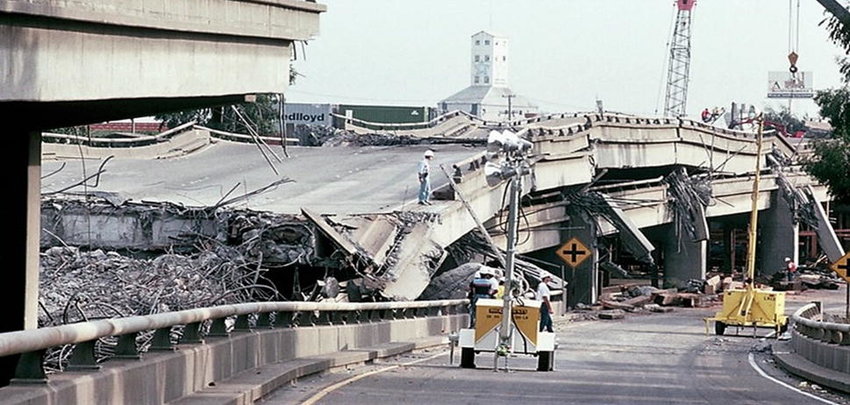The Cypress Street Viaduct Collapse: A Tragedy of the Loma Prieta Earthquake
During the Loma Prieta earthquake, 1989, a double-decker freeway collapsed, highlighting structural vulnerabilities in earthquake prone areas.
ENVIRONMENTAL DISASTERS


On October 17, 1989, the Cypress Street Viaduct, part of Interstate 880 in Oakland, California, became the tragic symbol of the devastating Loma Prieta earthquake. This catastrophic event not only marked a pivotal moment in the Bay Area's history but also led to significant changes in the way the region approaches infrastructure and earthquake preparedness.
The Loma Prieta Earthquake
At 5:04 PM on October 17, 1989, the San Francisco Bay Area was rocked by the Loma Prieta earthquake. A magnitude 6.9 tremor originating from Nisene Marks State Park near San Andreas Fault, the quake's epicenter, caused widespread damage and chaos. The quake lasted only 15 seconds, but its effects were profound and far-reaching.
The Cypress Street Viaduct
The Cypress Street Viaduct, also known as the "Cypress Freeway," was a double-decked section of Interstate 880 that ran through West Oakland. Constructed in the 1950s, the viaduct was part of the post-war freeway boom and was designed to accommodate the increasing traffic demands of a growing metropolitan area. However, the design and construction methods of the time were later found to be inadequate in the face of seismic events.
The viaduct was built using a non-ductile reinforced concrete structure, which lacked the flexibility needed to withstand the intense lateral forces generated by an earthquake. This design flaw would prove catastrophic.
The Collapse
As the ground shook on that fateful October afternoon, the Cypress Street Viaduct could not withstand the force of the earthquake. The upper deck and lower decks were connected by two-column bents which were not secureed in some areas. This lead the pins to vibrate and therefore the concrete began to crumble or break. The upper deck of the viaduct collapsed onto the lower deck, crushing vehicles and trapping commuters inside their cars. The collapse spanned approximately 1.5 miles of the freeway, creating a scene of unimaginable destruction.
Rescue efforts began immediately, with emergency responders and volunteers racing against time to save those trapped in the rubble. The chaotic aftermath saw heroic efforts, but the tragedy of the event was stark: 42 people lost their lives in the collapse. For many, the images of the collapsed freeway became the enduring image of the Loma Prieta earthquake.
The Aftermath and Impact
The collapse of the Cypress Street Viaduct exposed serious flaws in the region's infrastructure, particularly the vulnerability of older structures to seismic activity. In the wake of the disaster, there was a renewed focus on earthquake preparedness and the seismic retrofitting of bridges and freeways across California.
The viaduct was eventually demolished, and the section of Interstate 880 that once ran through West Oakland was rerouted and rebuilt. The new freeway was designed with modern seismic safety standards, reflecting the lessons learned from the tragedy.
Legacy
The Cypress Street Viaduct collapse remains a sombre reminder of the destructive power of earthquakes and the importance of resilient infrastructure. The Loma Prieta earthquake prompted widespread changes in building codes, emergency response planning, and public awareness about earthquake risks.
Today, the site of the former Cypress Freeway has been transformed, with new developments and green spaces that reflect the community's resilience and recovery. Yet the memory of October 17, 1989, endures, reminding us of the lives lost and the lessons learned in the wake of disaster.






